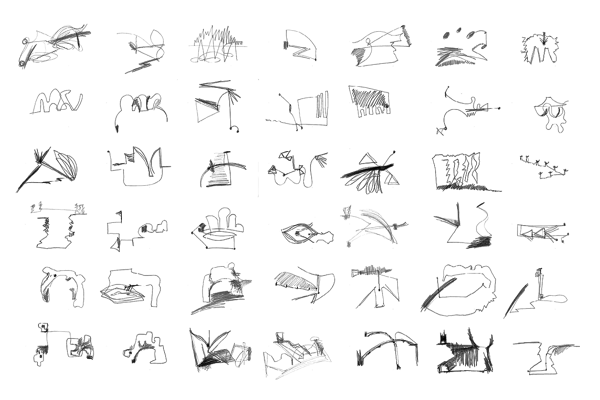0005
ANTITHESIS
What role has the consciousness in the process of architectural representation?
We ponder where and when is the moment of creative consciousness in the architectural design process. In spatial and temporal terms, it is at some point within the realisation of the creative consciousness.
The lucid dream reduces the distance between subconscious meditation and conscious manifestation. Reflecting on the thoughts of Voltaire, "Meditation is the dissolution of thoughts in Eternal awareness or Pure consciousness without objectification, knowing without thinking, merging finitude in infinity."
Scientific and artistic experiments of new consciousness explore shifts in working memory to look beyond conventional relationships and utilise new knowledge factors. Tests include 'The Nine Dot Problem' or the technique of long durational works. Other methods involve mind-altering apparatus and substances, in which risk, access and regulation is usually a factor.
An example in the field of architecture is the explosive sketch design in the practice of Open Architecture by Coop Himmelb(l)au. Unbound by spatial and temporal finitude, the collective consciousness becomes something real and rational, understood as a potential application to the architectural design process. This is true particularly when and where questions of universality are vital to the practice, client or proposal.
Studio Leader: Andrew Simpson Architect











